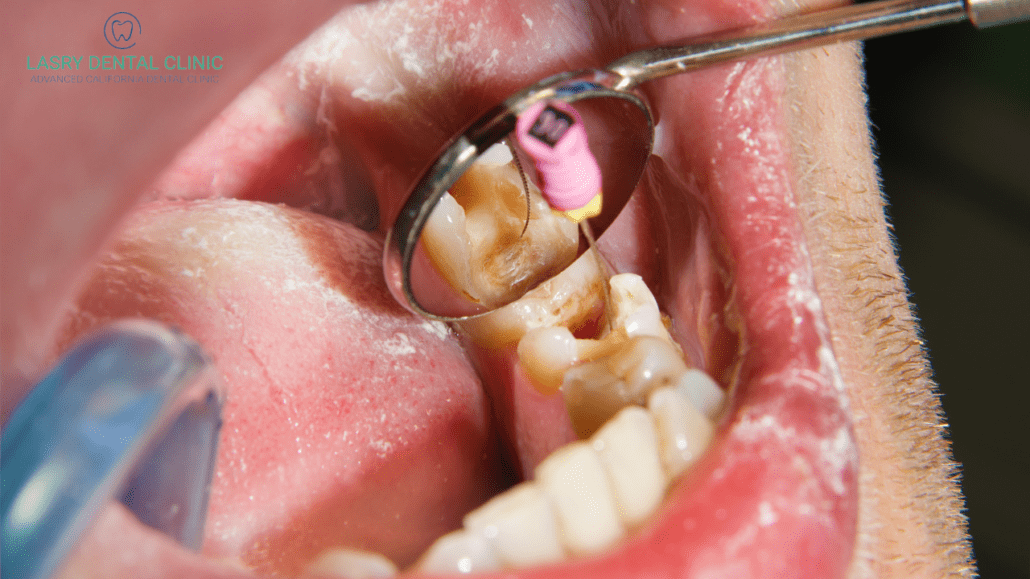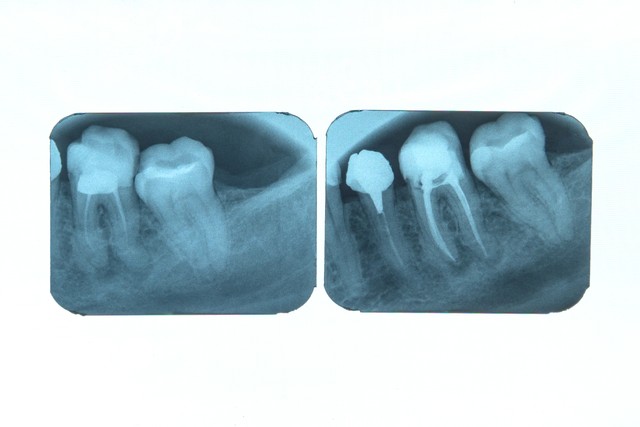Root Canal Procedure: What To Expect
A root canal procedure is one of the most common treatments dentists perform to save teeth from extraction. More than 25 million root canals are performed every year. Recent advances in root canal treatment make it a safe, successful, and comfortable procedure. It also is financially beneficial to save a tooth with a root canal rather than extract it and need a prosthetic replacement.
But before you go and book your root canal with Lasry Dental Clinic, let us tell you what to expect.
RELATED: HOW TO FIND A GOOD DENTIST – 4 SIGNS YOU FOUND “THE ONE”
What is a Root Canal?
So, exactly what is a root canal? It is cleaning diseased tissue from inside your tooth’s roots and then placing a filling in the space.
A root canal is the most common type of endodontic procedure performed by dentists. Don’t let the word endodontic alarm you; it simply means “inside” the tooth. If you look in the mirror, you can see fillings and crowns on the “outside” of your teeth.
Most of the root canal treatment takes place “inside” the tooth. The only thing you might be able to see is the small opening your dentist makes to begin the root canal treatment. Then the entire procedure takes place inside the tooth, completely out of your sight. You will only see the final result if your dentist shows you the dental X-ray after the treatment.
RELATED: TEETH WHITENING IN LOS ANGELES
What are the reasons you might need a root canal procedure?
You’re familiar with the hard enamel outer part of your teeth. This is what you brush, floss, and like to keep as white and healthy as possible. The part of your tooth that is above the gum is known as the crown of the tooth. Each tooth has one or more roots that you can’t see beneath the gum that holds your teeth into your jawbones.
On the inside of each tooth’s crown and the root is a soft material known as the dental pulp. Because it contains nerve tissue, most people simply call the pulp the nerve of the tooth. This tissue is actually what forms your teeth when you are young. Once the tooth completes developing, the dental pulp has no function. It just quietly exists in your teeth unless a problem develops, such as inflammation or infection.
Several kinds of problems can cause inflammation or infection of this tissue which makes it necessary for your dentist to do a root canal procedure.
Some of the common causes include:
- Deep tooth decay that goes all the way into the soft pulp tissue inside the tooth.
- Dental procedures such as fillings or crowns can cause severe inflammation.
- Trauma to a tooth that exposes the nerve of the tooth.
- An invisible hairline crack that goes all the way into the inside of the tooth, causing nerve inflammation (this often happens after biting a hard piece of food).
RELATED: WHAT ARE THE SYMPTOMS OF A TOOTHACHE?
When it comes to tooth trauma, you might think of something like getting a chipped tooth after being hit in the mouth. However, you might not even get a chipped tooth, and therefore assume everything is fine. Even in the absence of a chipped tooth or lack of pain, this trauma can still cause damage that requires a root canal.
Sometimes a person bumps a tooth and doesn’t think anything about it. But later, they notice the tooth changes color. This discoloration means there is damage to the inside of the tooth. A root canal (and sometimes a bleaching procedure) treats this condition. Pretty much any tooth that turns dark grey, yellow, or any shade other than that pearly white requires examination by your dentist.
What are the Steps for a Root Canal Procedure?
Most root canals involve the following steps:
1. Examination
Your dentist will examine your tooth and gums thoroughly and take a dental X-ray.
2. Testing
Performing certain tests confirm whether the tooth needs a root canal. These tests include tapping on the tooth, pressing on the gum beside the tooth, biting on a cotton roll or other material, and placing ice and/or heat on the tooth.
3. Local Anesthesia
A local anesthetic numbs the tooth after deciding to treat the tooth with a root canal.
4. Rubber Dam
Your dentist or dental assistant places a sheet of rubber known as a rubber dam around your tooth. This isolates the one tooth and keeps saliva from getting inside the tooth during the procedure.
5. Opening and Cleaning
Your dentist makes an opening through the top of the tooth so instruments can enter the inside of the tooth. These small instruments clean the diseased tissue from inside the tooth.
6. Kill Bacteria
These instruments also shape and create a space inside of each root so irrigating solutions can get all the way to the tip of the root and kill any bacteria.
7. Filling Placement
A root canal filling fills the space inside the root created by the root canal instruments. Usually, this filling material is a rubber-like material.
RELATED: WHAT IS A FULL MOUTH RECONSTRUCTION?
How long does a root canal take?
The short answer is 30 minutes to one hour. But complex treatments can take several hours. It can require one appointment or multiple appointments to complete your treatment.
This can depend on several things, such as the severity of inflammation or infection inside the tooth. Your dentist will give you the reason for deciding on the number of visits.
What is the recovery time for a root canal?
As a general rule, you should rest the day you have your root canal. After this, your tooth may be sensitive for several days. You should avoid chewing on the tooth until the discomfort resolves.
What To Expect
- Is a root canal painful?
The purpose of root canals is to get rid of and prevent pain. Usually, your dentist performs the treatment comfortably after numbing the tooth. Most people compare a root canal to having a filling done.
RELATED: HOW TO BRUSH YOUR TEETH PROPERLY
- How much does a root canal cost?
Discuss this with your dentist since many things decide this, such as the location of the tooth in your mouth, the number of roots involved, how open or closed the roots are, and if the tooth has a difficult restoration to cut through to begin the procedure.
- Are follow up appointments necessary?
You should have your dentist check your tooth and possibly take a new X-ray within one year after the root canal.








Great article and good point about pain. Due to negative media coverage and people’s experiences before modern technology, there’s a perception that root canals are painful. The fact is these days patients sometimes fall asleep in the chair while they’re being done!
Excellent article. And if patients pain persists after a few days it’s best to check back with the dentist just to be safe.
I like that you mentioned not chewing on your tooth for a couple of days until the pain resolves. My little sister is getting a root canal and I wanted to know what I can give her to eat after it. It sounds like we will be eating a lot of soup, smoothies, and yogurt.
Good info on follow-up after a root canal. A lot of articles miss out on that crucual point.
very informative blog post on root canal treatment. steps and post op care nicely explained.
which is the best crown after root canal treatment? metal or metal ceramic or zirconium?
It helped when you said that it can take up to an hour. My husband’s tooth has been in pain for the past couple of weeks now, so he talked to me about how he might have to get a root canal done. I’ll pass this information along to him so that he can know more about the root canal procedure!
Thanks so much for explaining what a root canal is and how it affects the mouth. I have a friend who’s been complaining about tooth pain that just won’t go away. We’ve been looking into finding a dentist that can help diagnose the problem and help fix the issue.
I didn’t know that root canals only last 30 minutes. My teeth have been hurting for months now. Maybe I should see the dentist for some x-rays to figure out what is going on.
I’m going to need to have a root canal done, and I’m very nervous. It’s good to know that the procedure isn’t painful if it’s done properly. I’ll be sure to find a dentist that I can trust to handle the procedure so that I don’t need to worry about it.
keep sharing good content.
It’s good to know that you should avoid chewing food on your tooth until the pain goes away. A tooth of mine has been in severe pain for the past couple of weeks, so I think it would be a good idea to look into seeing a dentist about getting a root canal sometime soon. I’ll keep these tips in mind once I find a dentist to see about getting a root canal.
Absolutely informative article! I recently underwent a root canal procedure, and reading through your blog post felt like a comprehensive guide that could have prepared me better for what to expect. The step-by-step breakdown of the procedure itself, along with the detailed explanation of why it’s necessary, really demystifies the whole process.